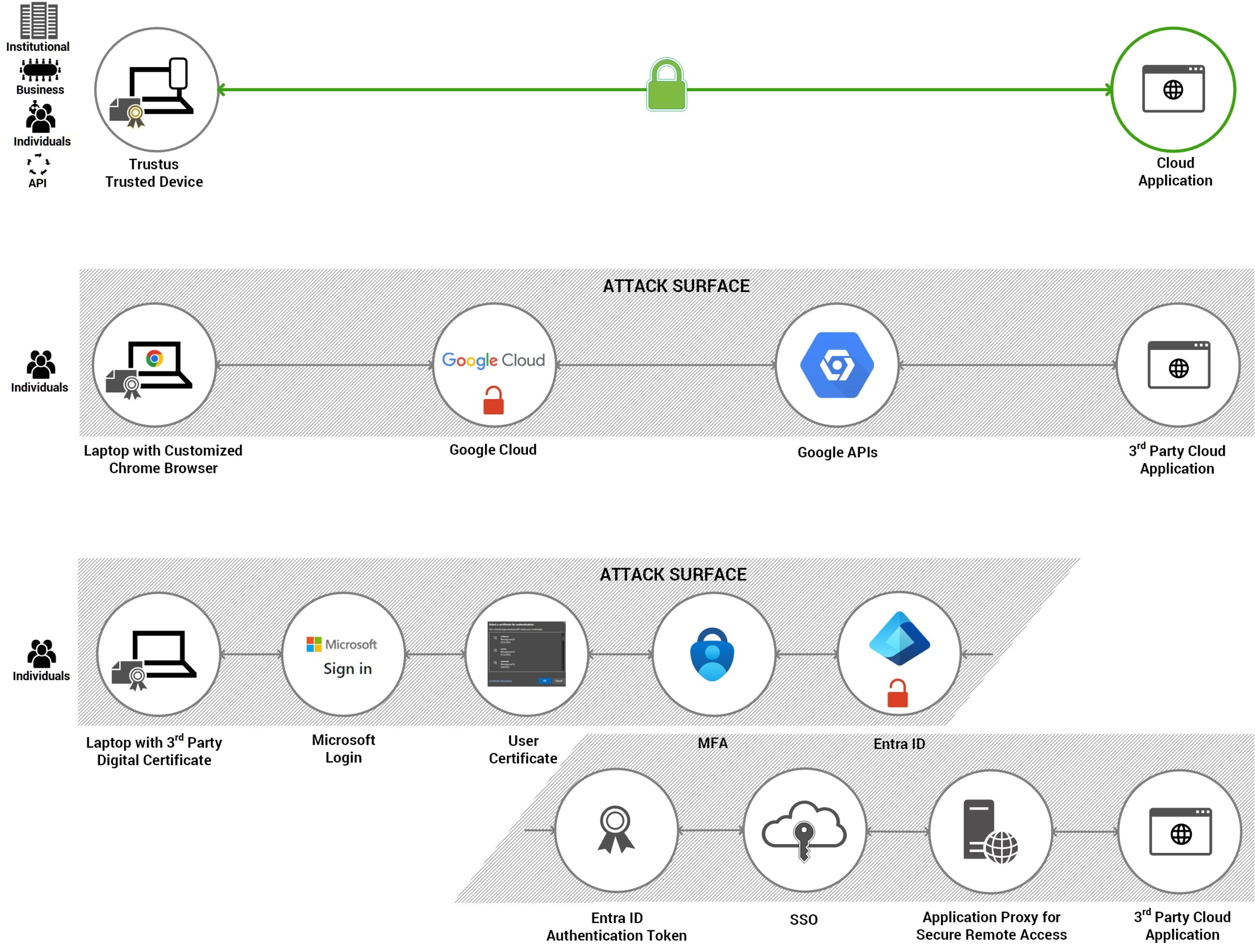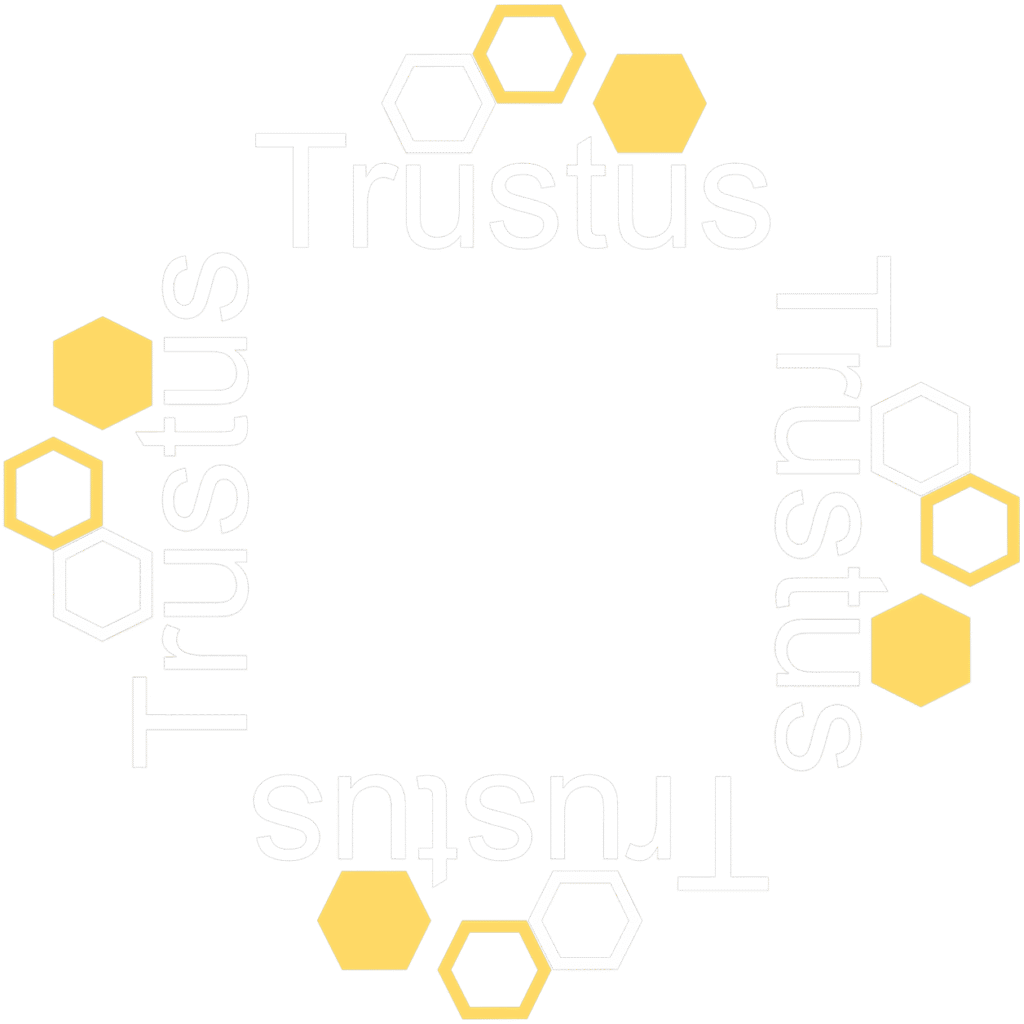Identity Without Limits: Unifying Every Entity as a User

The Identity Crisis:
The Core Challenge of Zero Trust is
a Divided Modern Enterprise
Disparate Identity Groups
User Identities: Human.
Workload Identities: Devices,
APIs, IoT/Robotica, Processes.
Fragmentation
Creates a massive, unmanaged risk surface and scales poorly.
Vulnerable to credential theft and compliance gaps.

The Trustus Breakthrough
Foundational Identity for All
Trustus eliminates the Zero Trust identity crisis.
We unify every entity in your environment under
a single, cryptographically assured standard:
The X.509 certificate.
With Trustus, we eliminate artificial security distinctions,
A laptop accessing a file, an IoT sensor sending telemetry,
an EDI process exchanging data, and a human user logging
in are all treated equally as valid, verifiable ‘users’.

How we deliver Foundational Trust
across all endpoints:

Universal Scope: Covers all heterogeneous endpoints.

Unphishable Security: Ultra-secure X.509 certificates on endpoints.

Dynamic Access Control: Real-Time Policy enforcement.
Secure identities. Secure Access.
Shut out attackers.
Universal Scope
Our Certificate-Based Authentication (CBA) covers all heterogeneous endpoints, providing a unified security
architecture that secures every corner of your network:

Unphishable Security
Every single entity is onboarded with an ultra-secure Trustus X.509 certificate deployed automatically by us.
Your entire ecosystem becomes immediately immune
to phishing and credential theft that plagues password and token-based systems.

Dynamic Access Control
Access is governed by the certificate's policy and validity.
If the certificate is instantly revoked (due to a breach or compromise), the enforcement system immediately and universally terminates the user access—whether that user is a human, a device, or a machine-to-machine process:
●
●
●
Access is governed by the certificate's policy.
Enforcement is performed by the Trustus Privacy Bridge.
The Privacy Bridge uses the certificate status to instantly grant or terminate access to the user.

Stop managing risk and start preventing it
With the Trustus Foundational Trust Platform.
See the unparalleled security and operational efficiency difference
it makes for your organization.
Foundational Trust in
Application Access Management
Trustus moves beyond traditional security models by establishing Foundational Trust as the basis for all access decisions replacing slow, outdated access control mechanisms with a real-time, dynamic architecture for enterprise.
Key Differentiators: Trustus vs. Legacy Systems
Our core difference lies in how we handle identity and access status in real time, enabling surgical control (Temporary vs. Permanent Revocation) that is impossible with other Public Key Infrastructure (PKI).
Feature:
Source of Truth
Status Update Mechanism
Access
Enforcement
Dynamic Control
Trustus Architecture (Foundational Trust)
X.509 Certificate (Machine Identity) managed by Intelligent Automation.
Stream of Truth: A real-time, instantaneous flow of policy status.
Privacy Bridge: A clientless/agentless conduit that blocks access proactively at the gateway.
Supports Temporary Revocation (Suspension) and Instant Reinstatement.
Legacy PKI / ZTNA Systems
Reliance on passwords, tokens, or slow, manually provisioned certificates.
Certificate Revocation Lists (CRLs): Batch-processed,
time-lagged, or proprietary one-off checks.
Requires installed software agents (VPN/ZTNA) or
relies on application-level checks.
Typically binary: Valid or Permanently Revoked. Suspension/reinstatement requires complex, slow
manual re-provisioning.
Trustus AAM
vs Traditional CBA
Trustus AAM
Google CBA
Microsoft CBA


